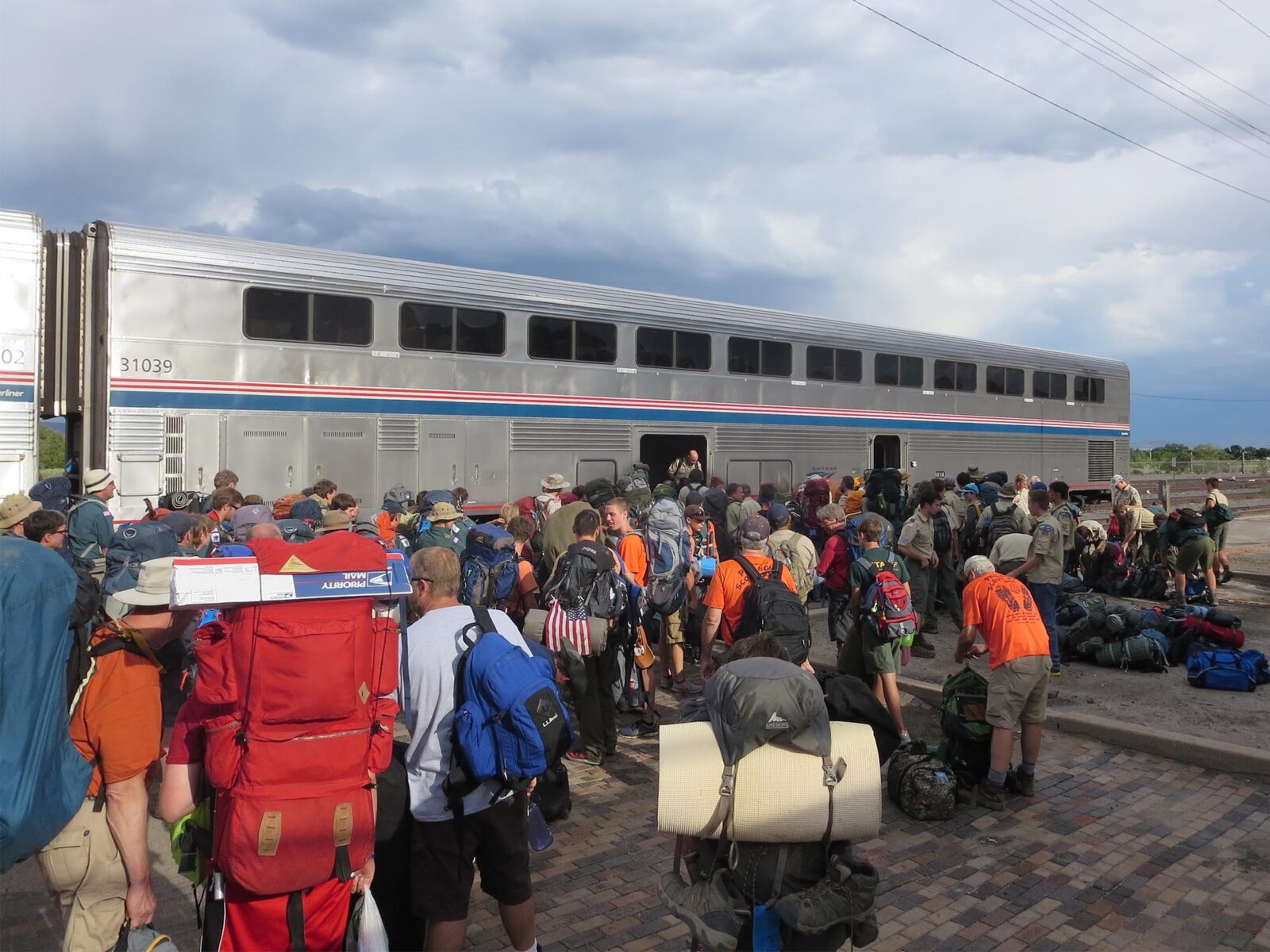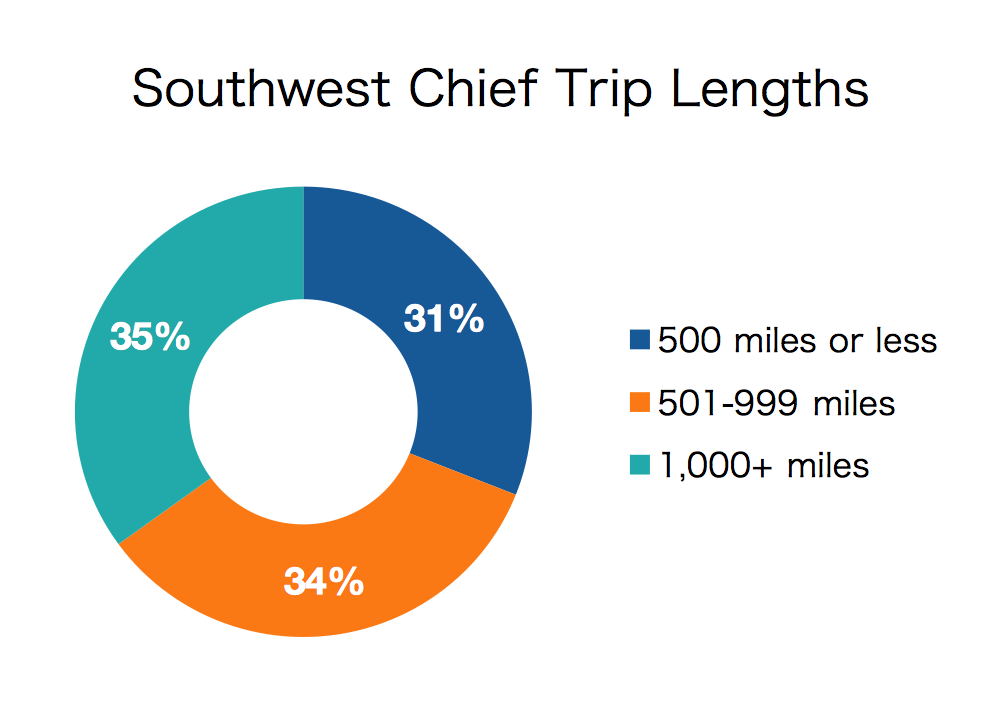Serving 528 city-pairs
Amtrak’s Southwest Chief serves a 2,265 mile corridor linking Chicago and Los Angeles.
This route currently has just one train a day in each direction yet it attracted 355,000 passengers in 2012—466 per departure.
Because it makes 31 intermediate stops, it provides a mobility choice for 25 million Americans who live within just 25 miles of a station.
Trip lengths vary from short (as few as 10 to 40 miles) to long (more than 2,000 miles) and everything in between.
(all figures in the page are based on FY2012 data)

Amtrak’s Raton station is a key gateway to the Boy Scouts Philmont Ranch.

Trip lengths vary from short (as few as 10 to 40 miles) to long (more than 2,000 miles) and everything in between.
Multiple, overlapping trip lengths
The large metropolitan areas at each end point generate nearly three fourths of all traffic, but:
- Only 8% of passengers travel the entire distance between Chicago and Los Angeles
- 64% travel between the one end point city and intermediate points
- 28% travel between intermediate cities
- 19% travel between city pairs where the passenger volume is less than one trip per day: markets so small that only trains with multiple intermediate stops could serve economically
Bundling low volume markets into a high-volume vehicle
This route makes transportation sense not only because it serves many more markets every trip than air ever could, but also because it does so economically. The result of piling dozens of different travel itineraries onto a single train produces significant revenue results.
- People who choose budget priced coach seats for trips shorter than 750 miles (the definition of a “corridor” route under current federal law) account for 54% of passengers but less than 37% of revenue.
- People making trips longer than 750 miles, even though a minority of travelers, account for 63% of revenue.
- People traveling the entire distance between Chicago and Los Angeles account for just 8% of passengers but 20% of revenue.
- Put another way, by providing comfort suitable for overnight travel and the convenience of a single seat ride, the route attracts 87% more people and generates 172% more coach revenue than it would if it were served only by daytime, short distance corridor trains.
Sleeping car passengers make it possible
The addition of sleeping car service further increases revenue. The people who choose this premium priced service account for just 17% of passengers but 44% of total route revenue, adding 78% more revenue than coach service alone.
- Sleeping car service generates a disproportionate share of revenue because the average fare per mile is double that in coach and the average trip is 82% longer.
- The average trip in a sleeping car is longer because few people choose them to make short distance trips. For trips shorter than 500 miles, 97% choose coach. However, even for trips longer than 2,000 miles, 27% more people choose coach than sleeper.
Feeding passengers into other routes
Connections in Los Angeles, Kansas City and Chicago increase revenue even more.
- They increase the number of city pair markets possible far above the 528 served by this route alone.
- More than one in four passengers using the Chicago–Los Angeles corridor begin or end their trips on other routes.
- Connecting passengers generated 89% more revenue than this route would have if operated as an isolated, stand alone corridor.

Take Action
The country needs an Interstate Railway Program, like the Interstate Highway Program, to take full advantage of the community, economic, and environmental benefits of trains.
Please join with us in asking Congress to create a national railway program to re-connect America with fast, frequent, and affordable trains.
